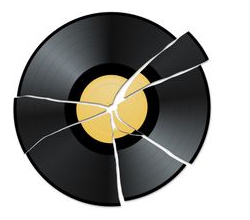
4) The Fall Of Rental Companies – It used to be that renting gear was one of the secret cash-cows of the business.
Every town had at least one major rental company (New York, LA and Nashville had 4 or 5) and many engineers and producers made extra dough on their projects by renting their pricier gear back as an extra.
Thanks to the rise in software plug-ins, the need for that expensive hardware has dropped drastically. And even when it is rented, the length of the sessions has decreased to such a degree that what used to be a three or four week rental might now take only three or four days.
As a result, a lot of the major rental companies have either gone under or cut back drastically, the minor ones don’t exist anymore, and it’s rare that an engineer will even think about renting the gear back to a project as he’s just thankful for the job.
5) Mixing In The Box (Who Needs A Recording Console?) – As the 2000s came around the corner, you would never even consider doing a project without a recording console, and for sure, you’d never open a studio unless you had a Neve, SSL, API or the like.
Today, vintage recording consoles that regularly went for $250k plus and didn’t depreciate much can now be had for $50k or less with the seller feeling extremely pleased that he even found a buyer. With so little tracking with live musicians being done these days (see Loop-based Music) and the increased power of the DAW, why buy a recording console at all?
DAW’s offer so many features these days that a competent engineer can make a great sounding record in a way that couldn’t be done in 2000. The sound is good, the plug-ins are great and plentiful, the automation and recall are better than on any console, you’re no longer limited to a certain size control room by the size of a desk, and inexpensive controllers are plentiful. It’s no wonder that even the old-schoolers have finally acquiesced to “mixing in the box.”
6) Less Money Going Around – CD sales are way down and as a result, so are recording budgets. Where once a $100k budget was considered bottom of the barrel when budgets for even non-superstar acts were beyond $500k, we now live in a world of $40 and 50k budgets. No money – no big studio, no rentals, no hardware purchases.
It’s all tied together. Superstar acts still get a blank check, but there are fewer and fewer of these acts. The future of the recording budget is here – get used to $40k or even less.
7) Sample and Loop-based Music – Once upon a time, all music started with real musicians tracked live. That all changed in the 2000s. Programs like Acid and Ableton Live made it easy to make some great music without ever seeing a real musician. Loop libraries gave you access to just about every kind of sound and mood that you could think of, and samples of every type of instrument became more realistic.
Suddenly, you didn’t need a studio, you didn’t need a tracking room, you didn’t need a player – all you needed was a laptop, some software and a set of headphones. Television and film composers no longer needed an orchestra, keyboard players could record great guitar and bass parts without the players, and no one needed a drummer if you had BFD or a similar program. It changed the music world, although not so much for the better, I’m afraid.
